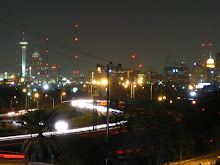
The Council House Fight was a conflict between Republic of Texas officials and a Comanche peace delegation which took place in San Antonio, Texas, on March 19, 1840. The meeting was conceived as taking place under a negotiated truce with the purpose of (on the Comanche side) obtaining recognition of the boundaries of the Comancheria, and on the Texas side, the release of Texan and Mexican hostages who had been captured by the Comanche in recent years. The event ended in the death of 30Comanche leaders who had come to San Antonio under a flag of truce. This incident hardened Comanche hostility to Texans for years to come.

Texas officials, with the exception of Sam Houston, did not understand that the Comanche were not a unified nation in the sense that Europeans were. The absence of a unified tribe allowed the various independent divisions to hold captives and refuse to honor agreements to return them. They never agreed to return any captives, instead often incorporating them into the Comanche, who made little distinction between birth and adopted members of the tribe.
The Comanche underestimated the Texans. The Comanche had held the Spanish colonies in check by ruthless raiding, and ferocious cruelty. They were unprepared for organized resistance from the Texans as settlements began to steadily encroach onto the Comancheria.

The Comanche arrived in San Antonio on March 19. Expecting only discussion and bargaining at the council, the 12 chiefs brought women and children as well as warriors. The Comanche chiefs at the meeting had brought along one white captive, and several Mexican children who had been captured separately. The white captive was Matilda Lockhart, a 16-year-old girl who had been held prisoner for over a year and a half. According to witnesses, including Mary Maverick, who helped care for the girl, she had been beaten, raped and suffered burns to her body. Her face was severely disfigured, with her nose entirely burned away.

The talks were held at the council house, a one-story stone building adjoining the jail on the corner of Main Plaza and Calabosa (Market) Street. During the council, the Comanche warriors sat on the floor, as was their custom, while the Texans sat on chairs on a platform facing them. Lockhart had informed them that she had seen 15 other prisoners at the Comanche's principal camp several days before. She maintained that the Indians had wanted to see how high a price they could get for her, and that they then planned to bring in the remaining captives one at a time.
The Texans demanded to know where the other captives were. The Penateka spokesman, Chief Muguara, responded that the other prisoners were held by differing bands of Comanche. He assured the Texans that they could be exchanged for a great deal of supplies, including ammunition and blankets. He then finished his speech with the comment "how do you like that answer?"
The Texan militia entered the courtroom and positioned themselves at intervals on the walls. The Texas officials said that chiefs would be held hostage until the white captives were released.
The angry chiefs began shooting arrows and using their knives to fight their way out of the room. Texan soldiers opened fire, killing both Indians and whites. The Comanche women and children waiting outdoors began firing their arrows after hearing the commotion inside. When a small number of warriors managed to leave the council house, all of the Comanche began to flee. The soldiers who followed again opened fire, killing and wounding both Comanche and Texans.

According to the report by Col. Hugh McLeod, written March 20, 1840, of the 65 members of the Comanches' party, 35 were killed (30 adult males, 3 women, and 2 children), 29 were taken prisoner (27 women and children, and 2 old men), and 1 departed unobserved (described as a renegade Mexican). Seven Texans died, including a judge, sheriff, and an army lieutenant, with ten more wounded.
Of the 16 hostages the Texans were determined to recover, 13 were tortured to death as soon as the news of the Council House Fight reached the outraged Comanches. The captives, including Matilda Lockhart's 6 year old sister, suffered slow roasting among other tortures. Only the 3 captives who had been adopted into the tribe, and by Comanche custom were truly part of the tribe, were spared. This was part of the Comanche answer to the breaking of a truce.
Matilda Lockhart herself is remembered at another downtown site. Her return is depicted in Howard Cook's mural of Texas history in the downtown (then main) post office, finished in 1937 and refurbished a few years ago. Cook posed the girl with her back to the viewer, since the condition of her nose — said by Maverick to have been burned partly away — may have helped to spark the massacre. Lockhart reported at least 13 other captives had been left behind when she was brought to the ill-fated peace talks.

I think everyone involved would be happy to know that the Main Plaza is now such a peaceful place with trees and benches. A perfect memorial to all those who died in the battle.
More Info on the Battle
Hugh McLeod's Report on the Fight
Wikipedia's Official Entry for the Battle
Main Plaza Conservancy

No comments:
Post a Comment